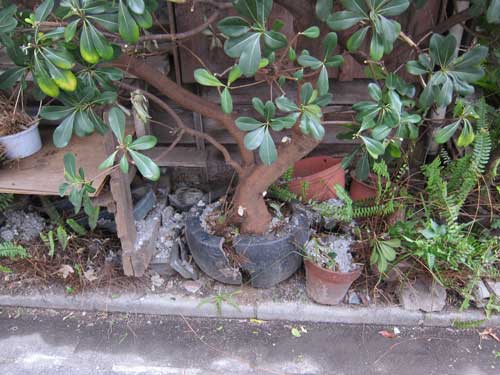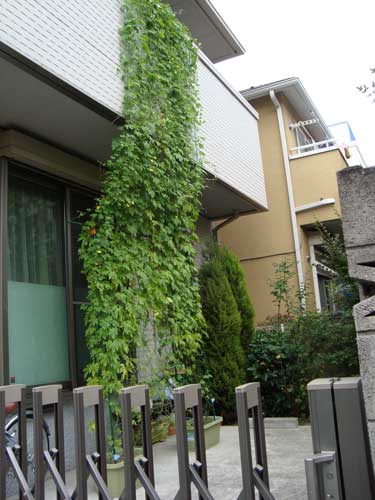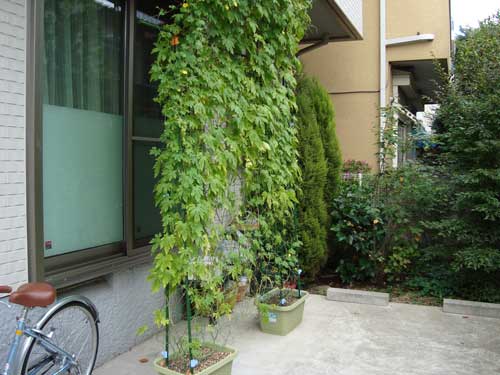
Minimal and superb Omotesando Koffee is a modular cube inside an old Omotesando house. It’s supposed to last one year, after which the building may be “reformed” as the Japanese call it.
In addition to delicious coffee in a nearly hidden spot, Omotesando Koffee has the most perfect Japanese garden with two benches for seating. I love the stone path, old light fixtures, and the very Tokyo odd mix of wood, bamboo, and the ubiquitous cinder block.
It’s a very small garden, with many traditional and resilient Japanese plants, including hollyhock, maple, and hydrangea. Worth finding if you’re in the area. Hollyhock is becoming my favorite late summer flower.
For those far away, I have included an image of the sign outside (it looks like a black frame), and the clever way they turn standard paper bags into a lovely and minimal branded object.







